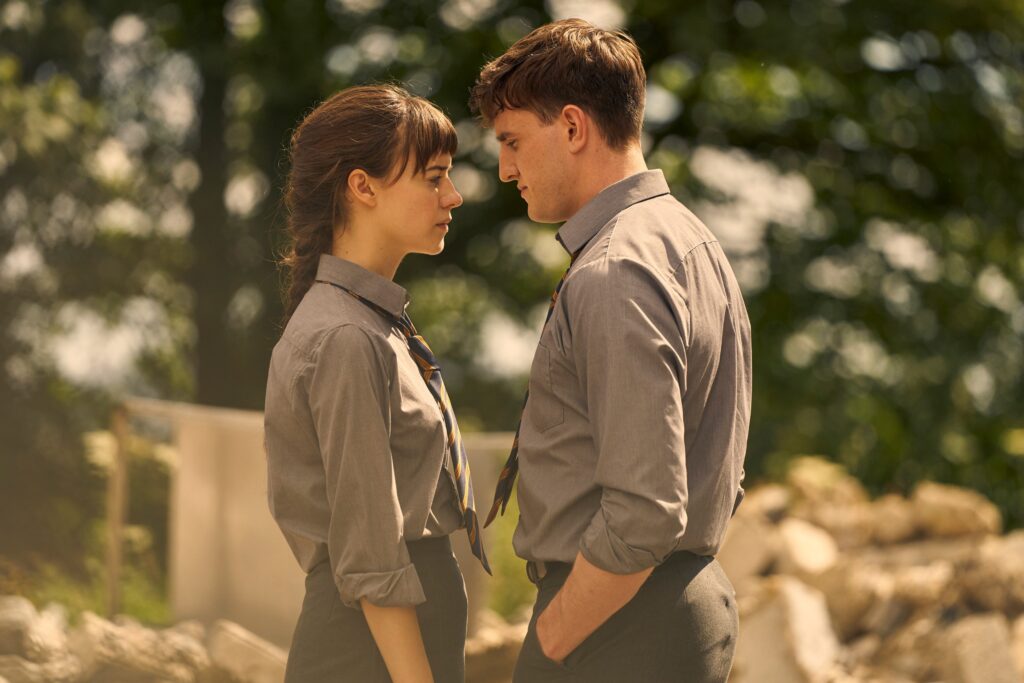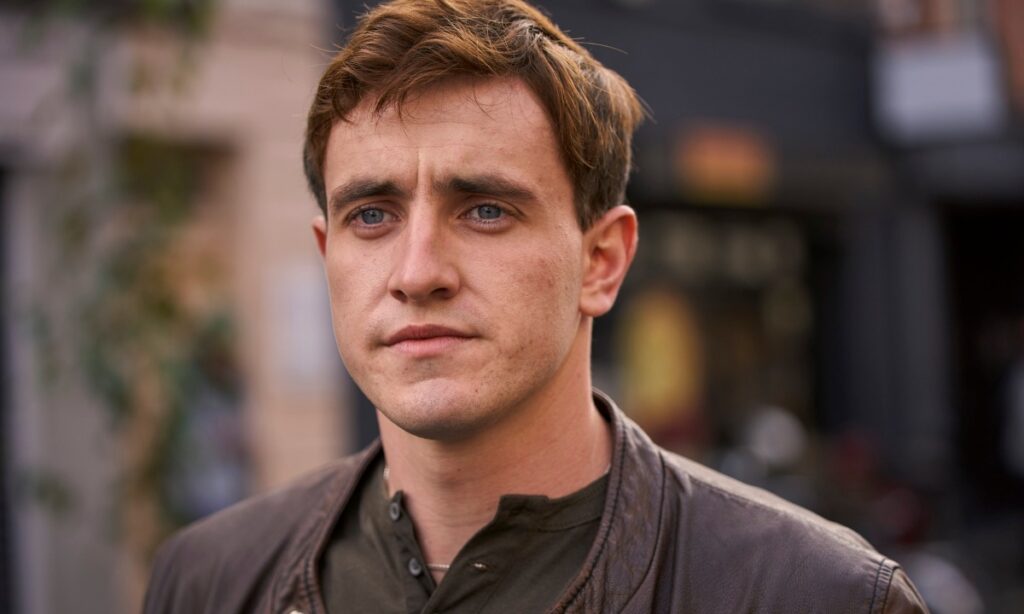
The title practically demands deconstruction. Are the characters in Normal People… normal? The simple, unsatisfying, entirely accurate answer is that, well, they are and they aren’t. The more complex response requires delving into the thematic contradictions that are inherent in most great works of art. The players at the center of this stupendous new series, which is based on a novel by Sally Rooney, are familiar, relatable, and ordinary. They are also unique, complicated, and fascinating.
The brilliance of Normal People, which Rooney has adapted to television with the help of co-writer Alice Birch and showrunner Ed Guiney, is how it captures the universal qualities of its experiences—love and loss, elation and confusion, falling down and growing up—without sacrificing an ounce of its characters’ individuality. The story that it tells is resolutely intimate, never resorting to false contrivances or cheap melodrama. Yet as it progresses, the series accumulates a certain grandeur, an invisible sweep that magnifies the intensity of its images and emotions. On paper (I haven’t read the novel), Normal People’s boy-meets-girl premise may sound prosaic. But on the screen, with beauty and force, it turns that prose into poetry.
It is also slyly unpredictable, not so much in terms of plot but scope. For a show that is primarily about a single relationship between two people, Normal People is startling in its sprawl, spanning years and chronicling changes—of temperament, of status, of worldview—that roll in from the beach like seismic waves. It is simultaneously economical and expansive; its 12 episodes are all short, ranging from 22 to 33 minutes, but they rush forward with surprising speed and variety.

The first few installments trace the arc of what appears to be an ugly-duckling story, a teen movie in the mold of John Hughes or She’s All That. Marianne (Daisy Edgar-Jones) is the class brain in a small Irish neighborhood; her intelligence, combined with her slightly standoffish persona and buttoned-up appearance (she always wears her hair in a tight braid), have made her not just friendless, but the target of petty bullying. (She doesn’t shrink from confrontation; when one lout accuses her of believing that she’s better than he is, she brusquely assures him that, yes, she is.) Her social circle is more of a dot. It’s certainly distinct from that of Connell (Paul Mescal), an attractive, effortlessly popular rugby star surrounded by back-slapping pals and adoring blondes. They differ in terms of class as well: Connell’s mom, Lorraine (Sarah Greene), works as a maid in Marianne’s handsome house, which is also occupied by her distant mother and brutish brother. It’s their parents’ transactional arrangement which occasionally places Connell in Marianne’s living room, when one day she surprises him—with a blunt courage that the show has already hinted at—with an offer of sex. When he expresses concern that his peers might disapprove, she responds, with a mixture of defiance and naiveté, that nobody needs to know.
What immediately follows would seem to suggest a prototypical tale of passion, vulnerability, and predation. Marianne and Connell embark on a clandestine affair, though he continues to largely ignore her at school, even taking a different girl to a dance. Yet while Connell’s apparent indifference toward Marianne brands him as the assailant and her as the victim, Normal People has no interest in assigning its characters such clumsy and simplistic roles. Marianne is obviously devastated by Connell’s incongruous behavior, but when she severs all contact in response—an act that meets the approval of his mother, who admonishes her son in a blistering tirade of a kind rarely given to on-screen parents—it’s Connell whose world is truly upended. His duplicity is shown to arise not out of malice but out of deep-seated insecurity. The final scene of the third episode—which finds a teary Connell stumbling down a vacant street, leaving Marianne a plaintive voicemail, then screaming in self-inflicted agony—reveals a young man utterly lost.

That sequence is something of a flash point for the series, the moment when it transforms from a recognizable teen romance into something stranger, richer, messier, and lovelier. The subsequent episode leaps ahead to Marianne and Connell’s freshman year at Trinity College in Dublin, where they cautiously reconnect and eventually respark their relationship while also facing their own adventures and challenges. Normal People is certainly a love story, but it doesn’t really proceed according to classical conceptions of fictionalized romance—will they/won’t they, on again/off again, etc. Instead, it’s more of a dual character study, warmly monitoring its leads as they struggle and mature independently, even as their lives remain inextricable from one another.
There’s nothing revolutionary or gimmicky about the way Normal People unfolds, but it nevertheless exploits the versatility and mutability of modern television. The series locates the tricky, delicate balance between serialized and episodic, continually telling the ongoing story of Marianne and Connell’s relationship while still allowing for bold shifts in perspective and scale. The seventh episode, for example, spans an entire year at university, as Marianne attempts to reach an equilibrium with a new boyfriend (Fionn O’Shea) while Connell copes with gnawing discontent; the following half-hour spends just a single day at her summer villa in Italy, where his arrival ignites a tremulous, lavishly appointed powder keg.
As with most romances, Normal People burns brightest when its principal lovers share the screen, but it never languishes when it separates them. There are twin episodes toward the back of the season (which is streaming in its entirety on Hulu) that find Marianne and Connell in different countries—she studying abroad in Sweden and fighting to assert herself in a new relationship, he floundering in Ireland in the wake of a former schoolmate’s suicide. Their isolated dilemmas are piercing in their own right—a sequence where Marianne finally discovers some agency simply by saying the word “No” is wrenching, while a scene where Connell weeps in a psychiatrist’s office is no less powerful—but they also render their joint screen time all the more poignant. The episodes we spend with them apart underline just how alive they become when they’re together. As Marianne says: “It’s not like this with other people.”

Her meaning is both emotional and literal. Normal People is breathtakingly frank about sex, not just in its unvarnished depictions of naked bodies colliding, but in examining the peculiarities of personal taste and physical chemistry. “Now can we take our clothes off?” Marianne asks earnestly before her very first tumble into bed, and her question is so simple and tender, you want to shelter her in your arms. But the show’s numerous sex scenes, choreographed with the help of an intimacy coordinator, avoid the trap of conjuring stock images of simulated ecstasy; instead, they actively explore the intimacy of sex, and how it feels different with different partners. (In another welcome development, the series features teenagers who actually discuss condom use—twice!) In fact, Marianne’s forays into BDSM prove to be a significant plot point, culminating in a moment in the penultimate episode that is, in its mingling of desire and shame, astonishing in its honesty.
The remarkable staging of that sequence—the way it combines exquisite gentleness with raw feeling—is emblematic of the series’ overall touch. Directing duties are split between Lenny Abrahamson (Room), who helms the first six episodes, and Hettie Macdonald (Howards End), who handles the latter six. There’s no evident stylistic divide between them; each is intently attuned to Rooney’s conversational rhythms and unforced realism. They also both imbue the series with a quiet, naturalistic beauty. Most scenes take place indoors, but every episode seems to make room for a striking shot of the outside world: a luminous sunset; a pool glowing with bright-blue water; soft moonlight illuminating a solitary car as it winds along a tree-lined road. In contrast to the delicacy of the images, the soundtrack is loaded with choice needle drops; the first two episodes alone feature cuts from Chvrches, Elliott Smith, and—short-circuiting its way into my central nervous system—Imogen Heap’s “Hide and Seek”.
But the real stars, of course, are the actors. As a show driven by its characters’ emotions, Normal People requires nimble, empathetic performances. It gets them. As the romantic naïf, Marianne is the initial magnet for our sympathy, a fact that Edgar-Jones both amplifies and smartly subverts. Even from the outset, when Marianne’s lust is hopeful and pure, there is something prickly about her determination and superiority, and Edgar-Jones leans into her tartness, sharpening her edges rather than softening them. (The details of the abuse that she suffered at the hands of her deceased father—and continues to endure from her brother—are never fully sketched, an omission that feels less like an oversight than a small grace offered to the character, and the viewer.) And as Marianne morphs from shy schoolgirl to vibrant woman (literally letting her hair down in the process), Edgar-Jones highlights her steeliness, which only makes her moments of pain hit that much harder.

If Marianne’s roiling journey of self-determination feels even remotely familiar, Connell’s is virtually unprecedented. Mescal, in his first screen role, is an absolute specimen, with jetliner wings for shoulders and ice-blue crystals for eyes. Yet despite his good looks and casual charm, Connell is afflicted with a sort of social paralysis, immobilized from acting on his own wants and needs. (He also refuses to disclose that he’s a gifted writer; one nice touch is that Marianne and Connell separately refer to the other as the smartest person they know.) “People seem to like me,” he murmurs at one point, and his befuddlement at his own appeal is just one facet of his self-doubt that Mescal emphasizes so potently. It’s a terrific performance in part for how rigorously internalized it is, how the actor conveys awkwardness and hesitation without verbalizing them. A scene where Connell mumbles that he intends to move back home, rather than ask Marianne to move in with her, might seemed contrived under different circumstances; here, it’s consonant with his pathological inability to articulate his feelings, a fumbling unease which Mescal expresses through downcast eyes and halting body language.
That sequence is one of many that broke my heart. Yet while Normal People is a deeply moving series—sad, uplifting, agonizing, life-affirming—it’s somehow weirdly more than that. Around halfway through its run, a kind of alchemical process took place, and I found myself experiencing it less as a viewer than a citizen, becoming a part of its hushed rooms and rolling landscapes. There’s something immersive about its emotional authenticity, which extended even to how I consumed the show. Hulu dumped out all 12 episodes at once, and while I abided by my self-imposed, anti-binge edict—never watching more than one installment in a single night—I found myself regularly returning to specific scenes from prior half-hours before starting the next episode. I did this not to remind myself of what had happened, but for the pleasing sensation of revisiting certain indelible moments. It was almost greedy of me; I wanted to spend more time with Marianne and Connell, to briefly reacquaint myself with their longing, their sorrow, their joy.
I’ve never done that before. I might never do it again. It’s not like this with other TV shows.
Grade: A
Jeremy Beck is the editor-in-chief of MovieManifesto. He watches more movies and television than he probably should.
